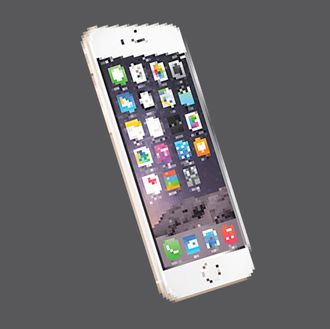
The locked iPhone used by Syed Rizwan Farook, one of the San Bernardino shooters, may finally have been accessed by the FBI, prematurely ending the agency’s court battle with Apple, but who knows if it was even worth it in the first place: Though the FBI has confirmed it gained access to the phone via a mysterious method provided by a third party, it won’t comment on whether or not anything on the phone was pertinent.
According to the New York Times, the FBI’s top lawyer, James Baker, briefed privacy professionals on the situation this week. Though he said that the bureau had extracted data from the phone (duh doy, of course the phone had data), he would not comment on whether the data was useful. “We’re still working on that, I guess is the answer,” he reportedly said.
This was to be expected. The FBI had launched their legal fight against Apple without even knowing whether Farook’s device had anything of interest, invoking themes like “justice for the victims and their families” to make their case to the public. Even if there was nothing on the phone, they supposedly had to access it.
Also to be expected: the hundreds of local law-enforcement agencies that have contacted the FBI with requests for assistance. Even before the shooting, according to USA Today, more than 500 cases involving locked devices were pending before the bureau; the FBI said in a statement that it would evaluate each request “on a case by case basis, using known forensic tools to assist when appropriate, consistent with our legal and privacy constraints.” Which is a nice thought, but doesn’t actually mean anything.
In the meantime, the FBI is also reportedly briefing senators on the investigation. According to the National Journal, California senator Dianne Feinstein was briefed on specifically how the FBI was able to access Farook’s phone, and North Carolina senator Richard Burr is set to also receive that info. (So, you know, if you need to get into a locked phone, try calling their offices.) The pair has been working on new legislation to limit encryption in consumer technology.
Privacy and technology advocates have called for the method to be made public, or at least disclosed to Apple, so that the company can close the breach, but law enforcement obviously has significant incentive to keep quiet on the matter. Given that the method was brought to the FBI by a third party though, rather than developed internally, it’s already floating around outside the government’s purview. In a talk last night, however, FBI director James Comey said that the technique did not work on newer iPhone 6 models or the iPhone 5s. “We have a tool that works on a narrow slice of phones,” he said.
All of this is … pretty much what was expected to happen. The FBI was never going to say one way or another whether the data it accessed on the phone was useful, and the methods it used were always going to trickle down to local law enforcement — but not to Apple itself.





























